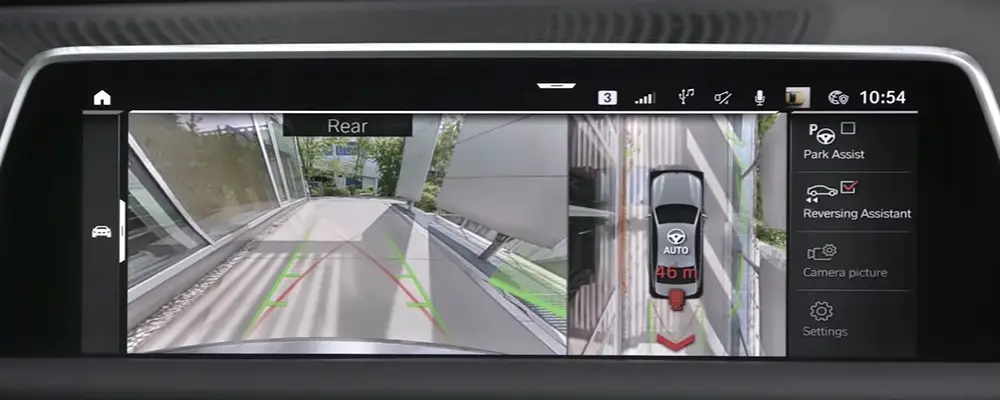How does Reversing Assist work?
We often face serious maneuvering issues while driving through narrow and compact spaces. Most of the time, the driver needs to back out from that space to give space to the approaching vehicle. The reversing assist helps you in such situations.
Furthermore, maneuvering, including reversing in such space, often requires many driving skills. Such a situation often leads to bumping on another vehicle or other obstacles like sidewalls. Maneuvers in situations often lead to the vehicle and/or property damage. The reversing assist helps you get out of such situations safely with just a touch of a button.
In addition, we encounter maneuver problems most often in big multi-floor parking spaces or parking in buildings. So, when the driver wants to go up the floor, an oncoming vehicle may block his path. Reversing in such situations is very stressful. The reversing assist records the way, and it takes back control with the help of that recording. It also applies brakes automatically in case of any obstacles on the way. Revering assist then reverses the car automatically to its starting position.
The components
Generally, a typical reversing assist requires two main components, first the ultrasonic sensor and a near-range camera. The ultrasonic sensor detects the distance from obstacles. It also alerts the driver if the obstacle is too close to the vehicle.
Furthermore, the near-range camera offers a better view of the surroundings to the driver. So, it improves visibility and provides better viewing angles to the driver. The camera helps the driver to make critical maneuvering decisions.
How does Reversing Assist work?
Most of the time, you need to back up if the road is too narrow or space is too tight for two vehicles to pass. It also gets critical if you are on a ramp moving to the upper floor of the parking space.
First of all, the reversing assist continuously records the last 50 meters of low-speed travel. So, it knows the path correctly. Furthermore, if the driver requests Reversing Assist, the system takes control. The system retraces the path it just recorded and then takes longitudinal and lateral controls into its own hands.
Furthermore, the near-range camera and ultrasonic sensor data work together via sensor data fusion. So, the system can also activate emergency braking if it senses an imminent collision with an obstacle. Hence, by taking back control, the reversing assist reverses the car safely and efficiently to its initial position. In addition, it removes the stress from the driver, giving him relief and avoiding damage to the vehicle and nearby property.
Advanatges
First of all, the reversing assist helps the driver in a critical reversing situation and avoids stressful situations. The system reverses entirely automatically without any human intervention. It also activates automatic braking if it detects an obstacle on its way.
In addition, the system avoids car and property damage in critical reversing maneuvers. Finally, the system is beneficial for new or less-skilled drivers helping them by taking over the control in tricky situations.
In conclusion, the reversing assist is beneficial for tackling tricky reversing situations. It also helps the new unskilled drivers, ensuring safe and efficient reversing.
Image Courtesy: Audi
Watch reversing assist in action
Read on: What is evasive steering assist? >>
